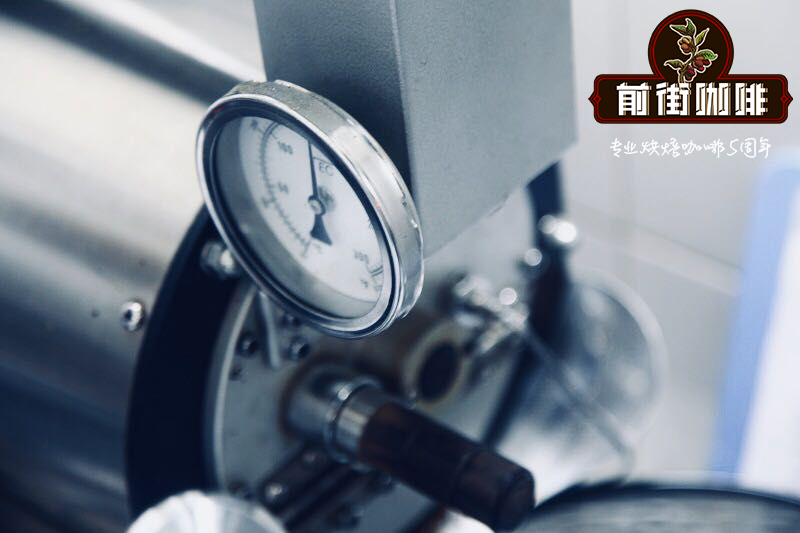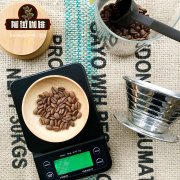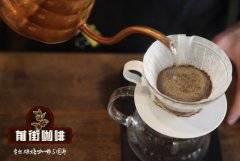Guide to the baking curve of Malaba Coffee description of the taste and flavor of Malaba coffee by different treatments

Professional coffee knowledge exchange more coffee bean information please follow the coffee workshop (Wechat official account cafe_style)
Wind-stained coffee needs to be made with sun beans, and all factories dealing with wind-stained coffee face to the west to meet the salty and wet monsoon blowing from the southwest sea. The coffee beans are spread flat in the wind field, the windows are all open, and the wind stains to a certain extent, and then enter the bag, but because the beans will expand a lot in the process, the coffee beans can not be filled too full, and the coffee bags should not be piled too dense to avoid mildew and spoilage due to lack of wind. It is also necessary to pour out coffee beans and replace sacks from time to time to avoid mold, which is a very time-consuming and labor-consuming project. The weathering period is about 12 to 16 weeks, and after it is ripe, it will be fumigated to drive out the weevil, and finally the beans will be screened manually to remove the failed beans that have not turned golden. After three to four months of wind treatment, green coffee beans are twice as large in volume and reduced in weight and density.
Although the wind-stained Malaba coffee beans seem to be big and fat, they are soft beans that are strong and dry outside, a change brought about by months of weathering. Coffee beans have been exposed to the moist monsoon for several weeks, which not only turns the beans yellow, but also reduces the acidity of the coffee itself, and the taste is very special. In addition to serving as a single product, Indian Malaba coffee beans are also suitable for blending integrated coffee beans.
In 1869, the opening of the Suez Canal and the advent of steamships shortened the voyage time from India to Europe, but customers began to complain that India's Malaba coffee was "tasteless", losing its charming color and flavor, and orders plummeted. Indian exporters found that the original time for coffee beans to be shipped to Europe had been shortened by more than half, and the "natural change" originally produced in the course of transportation could not be completed, thus losing the original flavor. The wise businessman thought of the monsoon blowing from the Indian sea every year from late May to September along the coast of Malaba in southwestern India, and the salty and wet environment was similar to that on the sea surface, so he set up scaffolding near the coastline. let the semi-finished products of raw beans accept "wind stains". After considerable experiments, we finally found the same coffee with the same grain aroma and low acidity as in the past. Because of the special production method of monsoon "wind stains", this bean has always been named after "wind-stained Malaba coffee" or "monsoon Malaba".
The moisture content of new beans is higher, more heat energy is needed to discharge water during baking, and the volume per unit weight is smaller. Because of the low moisture content of old beans, it is appropriate to use less firepower when baking, and because of the large volume per unit weight, if weighing is used as the measurement method of each baking, the weight of old beans should be reduced, or the volumetric method should be used instead, which is very important for baking raw beans with low moisture content, especially represented by Indian wind-soaked Malaba.
New beans have the richest aroma, but when roasting, you need to pay attention to dehydration and the acidity of coffee beans, which requires more technical and roasting focus than old beans. In Japan, some coffee manufacturers prefer to use old beans because they are easy to roast. and there is no need to deal with the excessive sour taste of coffee beans.
Important Notice :
前街咖啡 FrontStreet Coffee has moved to new addredd:
FrontStreet Coffee Address: 315,Donghua East Road,GuangZhou
Tel:020 38364473
- Prev

Introduction to Malaba Coffee: how to Bake Malaba Coffee and how well it is roasted
Professional coffee knowledge exchange more coffee bean information Please pay attention to the coffee workshop (Wechat official account cafe_style) wind-stained Malaba coffee beans seem to be big and fat, but they are soft beans that are strong and dry outside, a change that has taken place after months of weathering. The coffee beans have been exposed to the wet monsoon for several weeks, which not only turns the beans yellow, but also reduces the acidity of the coffee itself.
- Next

BOP Changsheng Manor Panama Hartman introduces the flavor characteristics of sun-treated coffee with long-tailed cuckoo.
Professional coffee knowledge exchange more coffee bean information please follow Coffee Workshop (Wechat official account cafe_style) Hartmann Troetsch, from 1940 began to inherit my father's farmland and began to prepare the land and then created the history of Hartmann Manor until today, can be said to be a manor with a long history, but also the winner of the Panama BOP Prize. The long-tailed cuckoo is in the sun.
Related
- Detailed explanation of Jadeite planting Land in Panamanian Jadeite Manor introduction to the grading system of Jadeite competitive bidding, Red bid, Green bid and Rose Summer
- Story of Coffee planting in Brenka region of Costa Rica Stonehenge Manor anaerobic heavy honey treatment of flavor mouth
- What's on the barrel of Blue Mountain Coffee beans?
- Can American coffee also pull flowers? How to use hot American style to pull out a good-looking pattern?
- Can you make a cold extract with coffee beans? What is the right proportion for cold-extracted coffee formula?
- Indonesian PWN Gold Mandrine Coffee Origin Features Flavor How to Chong? Mandolin coffee is American.
- A brief introduction to the flavor characteristics of Brazilian yellow bourbon coffee beans
- What is the effect of different water quality on the flavor of cold-extracted coffee? What kind of water is best for brewing coffee?
- Why do you think of Rose Summer whenever you mention Panamanian coffee?
- Introduction to the characteristics of authentic blue mountain coffee bean producing areas? What is the CIB Coffee Authority in Jamaica?

